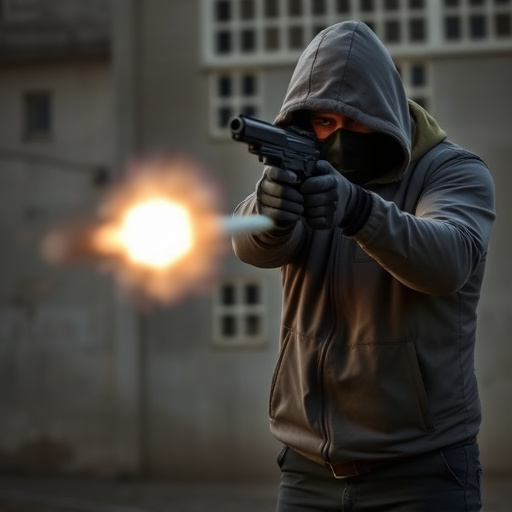Non-lethal self-defense stun weapons (stun guns, tasers, pepper spray) offer safe alternatives to lethal force for de-escalation scenarios. They temporarily disable attackers with electric shocks or irritants, providing escape time. Features include voltage, range, battery life, and compact design. Safety is paramount; advanced features mitigate risks of misuse. Performance metrics like voltage (50k-120kV) and impact (in joules) are key considerations. Local legal implications must be understood; research permits and restrictions. Choose based on power, range, charging, ergonomics, and weight, adhering to safety and legal guidelines.
In today’s world, personal safety is a top concern. Non-lethal self-defense stun weapons offer a powerful yet safe alternative to conventional firearms. This comprehensive guide explores the key components and specs of effective stun devices, from voltage and impact performance to legal considerations and choosing the right tool. Understanding these aspects ensures users are equipped with reliable protection without endangering lives.
- Understanding Non-Lethal Self Defense Weapons
- Key Components of Effective Stun Devices
- Safety Features: Ensuring User Protection
- Performance Metrics: Voltage and Impact
- Legal Considerations for Carrying Stun Guns
- Choosing the Right Non-Lethal Self Defense Tool
Understanding Non-Lethal Self Defense Weapons

Non-lethal self-defense stun weapons are designed to incapacitate or temporarily disable an assailant without causing permanent harm or death. These devices are becoming increasingly popular as a viable alternative to traditional lethal force, especially in situations where de-escalation and minimal injury are priorities. They operate on the principle of delivering electrical shocks, chemical agents, or other non-fatal stimuli to disrupt an individual’s motor functions, giving users time to escape or seek help.
Stun guns, tasers, and pepper spray are among the most common types of non-lethal self-defense weapons. Stun guns emit a powerful electric shock that can cause muscle spasms and temporary paralysis, while tasers use electrical current to disrupt nerve signals in the body, leading to temporary immobilization. Pepper spray, on the other hand, irritates the eyes, nose, and throat, providing a momentary distraction and allowing users to retreat safely. Each of these devices has unique features and specifications, such as voltage output, range, and active ingredient concentration, that contribute to their effectiveness in self-defense scenarios.
Key Components of Effective Stun Devices
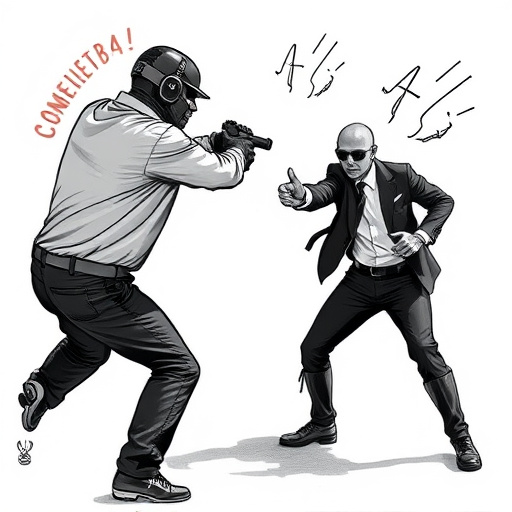
Effective non-lethal self-defense stun weapons are designed with several key components to ensure safety and deterrence. Firstly, they incorporate high-voltage, low-current electrical circuits that deliver a powerful shock when activated. This technology neutralizes an aggressor temporarily, allowing the user to escape or seek help. The device’s power source is another critical aspect; rechargeable batteries offer convenience and sustainability, making them more eco-friendly than disposable options.
Additionally, stun guns often feature a compact design, easy-to-use triggers, and durable construction for reliability in various situations. Some models also include additional features like LED flashlights or alarm systems to enhance their functionality during low-light conditions or to startle an attacker. These components collectively contribute to the overall effectiveness of non-lethal self-defense stun weapons as a safe and powerful tool for personal protection.
Safety Features: Ensuring User Protection
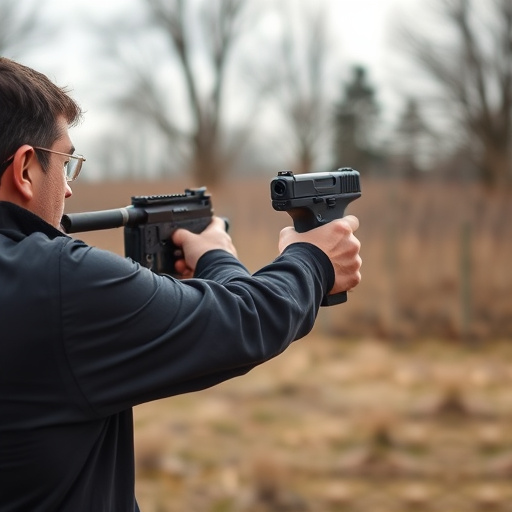
When it comes to non-lethal self-defense stun weapons, safety features are paramount. These devices are designed to incapacitate an attacker temporarily without causing permanent harm, but they must be used responsibly and with proper training. Advanced safety mechanisms, such as automatic shut-off features after activation, ensure that the device is temporary and not a deadly force alternative.
User protection also extends to construction quality and reliable performance. High-quality materials and precise engineering prevent accidental discharges, ensuring that only the intended target is affected. Additionally, some models incorporate safety switches or requirement for a specific motion (like a trigger squeeze) to activate the stun, further mitigating risks associated with misuse.
Performance Metrics: Voltage and Impact
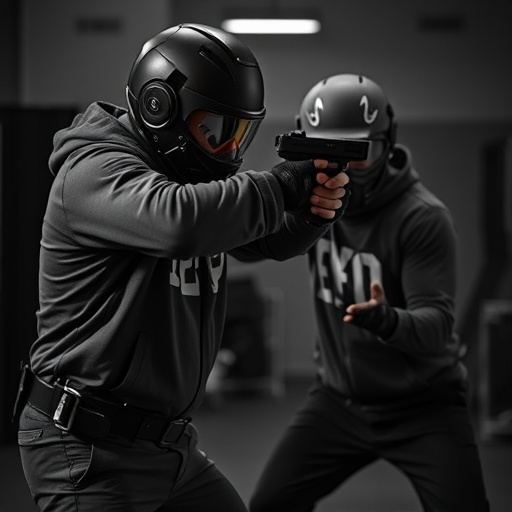
Performance Metrics: Voltage and Impact
When considering non-lethal self-defense stun weapons, understanding performance metrics like voltage and impact is crucial. Voltage refers to the electrical charge delivered by the device, measured in volts (V). Higher voltage generally corresponds to a stronger stun effect, but it’s essential to balance this with safety considerations. Devices typically range from 50,000V to 120,000V, ensuring an effective knockout or incapacitation without causing severe or permanent harm.
Impact, on the other hand, relates to the physical force applied by the stun gun upon contact. This force disrupts the body’s electrical system, leading to temporary muscle spasms and disorientation. Measured in joules (J), impact strength can vary significantly among non-lethal self-defense tools. A higher joule rating indicates a more powerful impact, which can be crucial for breaking through an attacker’s defense or reaching distant targets. However, users must be mindful of the device’s range and accuracy to ensure safe and effective deployment.
Legal Considerations for Carrying Stun Guns
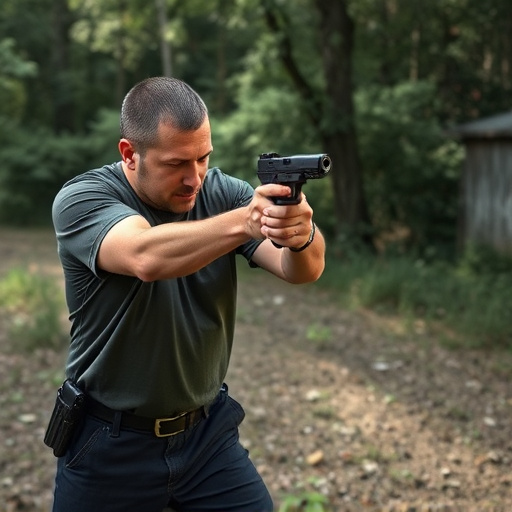
When considering non-lethal self-defense stun weapons, it’s crucial to understand the legal implications and regulations surrounding their carrying. The legality of stun guns varies greatly across different jurisdictions, with some regions allowing them without a permit, while others require specific licenses or permits. In many places, there are also restrictions on the power output and size of stun devices, ensuring they remain non-lethal in nature.
Before purchasing or carrying a stun gun, individuals should thoroughly research local laws and consult with legal experts to ensure compliance. Failure to adhere to these regulations can result in severe penalties, including fines and potential criminal charges. Staying informed about the evolving legal landscape is essential for responsible and lawful self-defense with non-lethal weapons.
Choosing the Right Non-Lethal Self Defense Tool
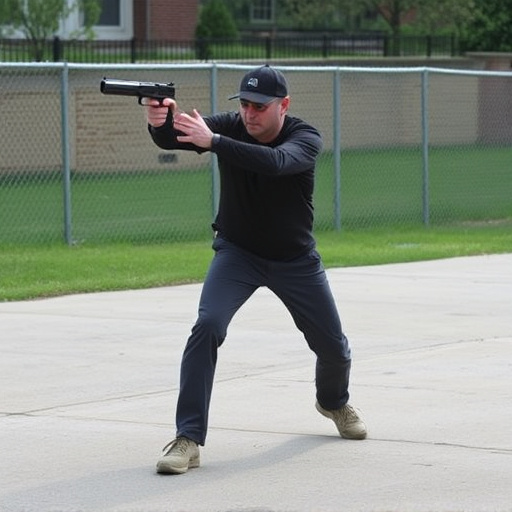
Selecting the appropriate non-lethal self-defense tool, such as a stun gun or Taser, is an essential step in ensuring personal safety. The market offers various options, each with unique features and specifications. When choosing a device, consider factors like power output, range, and charging requirements. Higher voltage typically indicates more impact, but it’s crucial to balance this with user comfort and control. Look for devices with ergonomic designs that offer ease of use in stressful situations.
Additionally, weight and size are critical considerations. Smaller, lightweight options are easier to carry discreetly, while larger devices may provide extra power at the cost of portability. Some models feature advanced safety mechanisms like motion sensors or manual activation switches, ensuring responsible usage. Always review local laws and regulations regarding non-lethal self-defense weapons before making a purchase.
Non-lethal self defense stun weapons, with their strategic blend of power and safety features, offer individuals a powerful option for personal protection. By understanding key components, performance metrics, legal considerations, and choosing the right tool, users can navigate this dynamic landscape with confidence. Embracing these devices responsibly empowers folks to protect themselves while promoting de-escalation in potentially dangerous situations.
